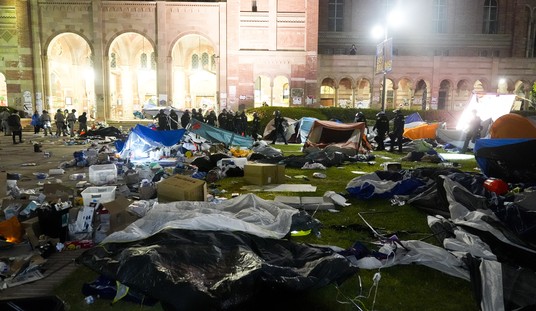Is there anybody sane left in education? I just received an email from an Alexandria, Virginia resident about a Methodist Church preschool that will be teaching preschoolers using the “Reggio Emilia” method. What is the “Reggio Emilia” method, you might ask? Behold, (with the appropriate grain of Wiki salt):
Children must have some control over the direction of their learning . . .
Reggio Emilia’s tradition of community support for families with young children expands on a view, more strongly held in Emilia Romagna and Tuscany, of children as the collective responsibility of the local community. . .
In the Reggio approach, the teacher is considered a co-learner and collaborator with the child and not just an instructor. Teachers are encouraged to facilitate the child’s learning by planning activities and lessons based on the child’s interests, asking questions to further understanding, and actively engaging in the activities alongside the child, instead of sitting back and observing the child learning.
Because after all, 3 year olds should be deciding what they are interested in learning. Imagine a nation where children believe they are the center of the universe, that they get to decide everything, imagine a nation where an entitlement philosophy dominates. . . oh, wait, I don’t have to imagine.
And if the child centric universe wasn’t bad enough, get a load of the physical plant:
The organization of the physical environment is crucial to Reggio Emilia’s early childhood program, and is often referred to as the child’s “third teacher”. . . .Major aims in the planning of new spaces and the remodeling of old ones include the integration of each classroom with the rest of the school, and the school with the surrounding community. The importance of the environment lies in the belief that children can best create meaning and make sense of their world through environments which support “complex, varied, sustained, and changing relationships between people, the world of experience, ideas and the many ways of expressing ideas. The preschools are generally filled with indoor plants and vines, and awash with natural light. Classrooms open to a center piazza, kitchens are open to view, and access to the surrounding community is assured through wall-size windows, courtyards, and doors to the outside in each classroom. Entries capture the attention of both children and adults through the use of mirrors (on the walls, floors, and ceilings), photographs, and children’s work accompanied by transcriptions of their discussions. These same features characterize classroom interiors, where displays of project work are interspersed with arrays of found objects and classroom materials. In each case, the environment informs and engages the viewer.
Now turn the gobeldeegook dial up to 11:
As children proceed in an investigation, generating and testing their hypotheses, they are encouraged to depict their understanding through one of many symbolic languages, including drawing, sculpture, dramatic play, and writing. They work together toward the resolution of problems that arise. Teachers facilitate and then observe debates regarding the extent to which a child’s drawing or other form of representation lives up to the expressed intent. Revision of drawings (and ideas) is encouraged, and teachers allow children to repeat activities and modify each other’s work in the collective aim of better understanding the topic. Teachers foster children’s involvement in the processes of exploration and evaluation, acknowledging the importance of their evolving products as vehicles for exchange.
It comes as no surprise that John Dewey is behind much of this movement. Dewey was one of the famous defenders of Stalin’s Soviet Union. He contributed to the New Republic in the 1920’s articles praising Soviet Russia while at the same time millions were being murdered in the Gulags. Dewey even travelled to the Motherland in 1928 along with other revolutionary educators to examine the Soviet methods of education. The only surprising thing is that this self professed “progressive” education method has taken hold inside a small Methodist Church school inside the Beltway.
You can read more about the Reggio Emilia program over at the Center for EcoLiteracy, and ponder the question “What initial connections are you making between the way of learning at Reggio and the themes of this institute—sustainability, science, art, and design?”







Join the conversation as a VIP Member